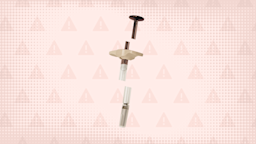Key takeaways:
Saunas have been around for centuries. But their popularity has grown over the years as research reveals their potential benefits.
Some benefits of regular sauna use include improved heart health, stress reduction and relaxation, and chronic pain relief.
Sauna use is safe and low risk for most people. But people with certain conditions — like heart disease or pregnancy — should avoid saunas or talk with a healthcare professional before using one.
Saunas have been a traditional part of many cultures for centuries, from Turkish baths and Native American sweat lodges to Russian banyas. In Finland, where saunas are a regular activity, there are 2 million saunas for the 5 million people who live there.
A typical sauna is a wood-lined room that’s heated, typically between 176°F and 212°F (80°C to 100°C). Some people add humidity by pouring water on hot rocks inside the sauna. But most saunas use dry heat (less than 20% humidity), which is very different from a steam room. A newer type of sauna, the infrared sauna, is becoming increasingly popular. Infrared saunas use infrared light to directly heat your body, so they’re able to operate at a lower temperature (122°F to 149°F, or 50°C to 65°C).
There’s a lot of research to suggest long-lasting health benefits from regular sauna use. Let’s dive deeper into how regular sauna use may benefit your health and help you live longer.
Search and compare options
1. Improved heart health
A lot of research suggests that regular sauna bathing can benefit your heart and cardiovascular system. This may be because saunas can affect the cells, arteries, and nervous system that play a role in heart health.
One study of men in Finland found a 63% decreased risk of sudden cardiac death in those who used saunas. The benefits seem to be greatest with frequent use — sessions lasting more than 20 minutes, at least 4 times a week.
Here’s what some of the research says about the heart health benefits of regular sauna bathing:
For people with heart failure, saunas can improve symptoms and increase exercise tolerance.
In people with coronary artery disease (CAD), daily sauna use can improve how much oxygen is flowing to the heart muscle. This may reduce the risk of dying from this type of heart disease.
People with peripheral artery disease, which limits blood flow to the legs, have improved walking endurance.
There’s an improvement in overall cholesterol profile after sauna treatment.
Saunas may also benefit heart health by lowering blood pressure.
2. Improvement in blood pressure
A sauna session will temporarily increase heart rate and blood pressure (like during an exercise session). But research shows a long-term benefit for blood pressure. In people with hypertension, saunas can help reduce overall blood pressure. And for people without hypertension, it can also lower their risk of developing high blood pressure later in life.
3. Lower risk of dementia and Alzheimer’s disease
Regular sauna use may lower your risk of developing dementia and Alzheimer’s disease. This potential benefit is less studied than heart health. But one study showed that men who used the sauna four to seven times a week cut their risk of dementia and Alzheimer’s by more than half.
Infrared saunas vs. traditional saunas: Learn the difference between these two types of saunas and find out which one is better for you.
Is a sauna good for weight loss? We dive a little deeper into how a sauna impacts water weight, metabolism, and fat storage.
Benefits of ice baths: Can’t handle the heat of a sauna? Consider an ice bath instead — it may boost your mood and speed up muscle recovery.
4. Recovery for sore muscles
The heat from a sauna can cause your body to release a substance called brain-derived neurotrophic factor, which helps heal muscles. The heat also increases blood flow to your muscles, which can help in recovery.
5. Eases joint pain and improves range of motion
Saunas can help with more than just sore muscles. They may also help people with conditions that cause joint pain and restricted range of motion. For example, people with rheumatoid arthritis or ankylosing spondylitis see improvements in pain and range of motion. Those with fibromyalgia or low back pain may notice decreases in their chronic pain.
Maybe most interestingly, people with pain actually report an increased quality of life after using a sauna. Even if you don’t have any of these diagnosed pain conditions, regular sauna use may help ease general soreness and fatigue.
Read more like this
Explore these related articles, suggested for readers like you.
6. Breathing improvements for asthma and COPD
Sauna use improves lung function and breathing in nearly everyone. But people with asthma, bronchitis, and chronic obstructive pulmonary disease (COPD) report they feel like they breathe better after using a sauna. And studies show that their lung function is better after the sauna. Even though the improvements are small, their feelings of improvement are notable.
7. Healthier skin in people with psoriasis
For most people, regular sauna use doesn’t have much of an effect on the skin. But if you have psoriasis, sauna use actually reduces the amount of skin plaques and scales.
8. Stress reduction and fewer depressive symptoms
Sauna use can result in overall stress reduction. There’s even evidence to suggest it can reduce levels of the stress hormone cortisol. People with depression who use a sauna regularly may notice increases in appetite and relaxation.
9. Excretion of toxins and heavy metals
Some people use saunas as part of a detox program. Sweating can help remove certain things that are stored in body fat, like heavy metals. But research suggests that sweat from exercise may be more effective at this than sweat from sauna use.
Saunas are also sometimes used to help detox the body from drugs. Many prescription medications and recreational drugs are stored in body fat. It’s possible that saunas may help eliminate these chemicals through sweating. But more research is needed to know if this makes a difference in people’s overall health. Still, some people do report feeling much better after a sauna detox program.
10. Fewer colds and viral illnesses
Using a sauna once or twice a week may decrease the number of colds and viral infections you get. People who use saunas regularly have a lower risk of upper respiratory infections and pneumonia compared to those who never use saunas.
11. Improved sleep
It’s possible that the increase in your body temperature during a sauna session could help restore your natural circadian rhythm. People report better sleep the night after any heat-related intervention, including saunas. More research is needed to really figure out the effects of sauna on sleep patterns.
Do saunas help you lose weight?
After a sauna session, you may have noticed that you’re a few pounds lighter on the scale. This is probably due to lost water weight through sweating. Water weight loss isn’t permanent. But can a sauna affect long-term weight loss?
More research needs to be done to answer this question. It’s possible that increased body heat from a sauna helps boost metabolism and burns more calories. This is the same idea behind hot yoga — your body works harder to cool down in the heat, which burns extra calories. But there’s not enough research to know the long-term effects of regular sauna use on weight loss. So, most experts don’t recommend sauna use as a weight-loss strategy.
How to use a sauna
When you’re ready to use a sauna, keep the following tips in mind for a safe and enjoyable experience:
Take a quick shower first. You’ll want to cleanse your skin before entering the sauna, especially if you just finished a workout.
Hydrate before and after. Heat can cause dehydration. So, be sure to drink water before and after a sauna session.
Check your attire. You can wear a towel, swimsuit, or go nude in many public saunas. Make sure you know the rules and wear what’s comfortable for you. If you go nude, sit or lie on a towel.
Enter and exit the sauna quietly. The goal is to have a quiet, calming experience.
Start with 5-10 minutes at a time. You can gradually work up to 15-20 minutes in a traditional sauna or 20-45 minutes in an infrared sauna. Typically, it isn’t recommended to exceed these times.
Find a comfortable spot to relax. Sit or lie down if there’s room. Try closing your eyes and breathing deeply to relax and calm your mind.
Cool down and shower after your session. Take a quick shower to clean your skin after your session. A cool shower might help you cool off.
Listen to your body. Exit the sauna if you feel dizzy, lightheaded, or uncomfortable.
Who should avoid saunas?
Most people can use a sauna without any problems. Some people may experience unpleasant symptoms, like claustrophobia or heat intolerance. But both of these symptoms can improve with repeated sauna use.
But still, some people should avoid using a sauna. Heat may be harmful for anyone with one of the following conditions:
Recent heart attack
Recent stroke
Heart disease that causes chest pain (angina pectoris)
Severe aortic stenosis (a narrowing of a major heart valve)
Advanced or poorly managed heart failure
Pregnancy
There are also a few more precautions to keep in mind:
People with heart conditions may experience high or low blood pressure, which can cause symptoms like chest pain or dizziness.
There’s some evidence that sperm production is decreased during regular sauna use. But this effect hasn’t been studied extensively.
Children shouldn’t use saunas since they have a harder time regulating their body temperature.
Everyone, whether or not they have underlying conditions, should avoid alcohol use during sauna bathing.
Frequently asked questions
It may be safe to use a sauna daily, but it depends on your health, tolerance, and preferences. If you’re generally healthy, you might try working up to daily sauna use to see if it works for you. But be sure to follow best practices, such as staying hydrated and limiting sauna sessions to 15 to 20 minutes. While regular use helps, you don’t have to use the sauna every day to reap benefits like stress relief and muscle recovery.
Yes, you can use a sauna after a workout. They may promote muscle recovery and relaxation after exercise. Try a sauna session after your next workout to see if it jumpstarts your recovery process. Just remember to hydrate before and after.
It’s generally not recommended to bring a phone into a sauna. High temperatures and moisture from the humidity can damage the battery, SIM card, or other parts. Leaving your phone outside also helps you focus on relaxing without distractions.
There are a few different types of saunas out there. Typically, they’re separated into “traditional” saunas and infrared saunas. Traditional saunas can get their heat from electricity, gas, or burning wood. Infrared saunas emit a kind of infrared light that heats up the room. The infrared source can be from a heat lamp or another emitting source.
A steam room is a hot room like a sauna. But it works a little differently. A steam room heats water to create steam. The steam heats up the room with a much higher humidity than a sauna. Steam rooms aren’t as well-studied as saunas, but experts believe they may also have positive effects on your cardiovascular system.
It may be safe to use a sauna daily, but it depends on your health, tolerance, and preferences. If you’re generally healthy, you might try working up to daily sauna use to see if it works for you. But be sure to follow best practices, such as staying hydrated and limiting sauna sessions to 15 to 20 minutes. While regular use helps, you don’t have to use the sauna every day to reap benefits like stress relief and muscle recovery.
Yes, you can use a sauna after a workout. They may promote muscle recovery and relaxation after exercise. Try a sauna session after your next workout to see if it jumpstarts your recovery process. Just remember to hydrate before and after.
It’s generally not recommended to bring a phone into a sauna. High temperatures and moisture from the humidity can damage the battery, SIM card, or other parts. Leaving your phone outside also helps you focus on relaxing without distractions.
There are a few different types of saunas out there. Typically, they’re separated into “traditional” saunas and infrared saunas. Traditional saunas can get their heat from electricity, gas, or burning wood. Infrared saunas emit a kind of infrared light that heats up the room. The infrared source can be from a heat lamp or another emitting source.
A steam room is a hot room like a sauna. But it works a little differently. A steam room heats water to create steam. The steam heats up the room with a much higher humidity than a sauna. Steam rooms aren’t as well-studied as saunas, but experts believe they may also have positive effects on your cardiovascular system.
The bottom line
There’s a reason sauna bathing is becoming more popular among people who want to maintain a healthy lifestyle. Researchers are still learning about all the benefits of sauna use, from improved heart health to a reduced chance of developing dementia.
If you’re interested in trying a sauna, start slow and work your way up to regular sauna use as your body adjusts to the heat. If you have any recent health problems or chronic medical conditions, it’s a good idea to talk to a healthcare professional before using a sauna.

Why trust our experts?


References
Beker, B. M., et al. (2018). Human physiology in extreme heat and cold. International Archives of Clinical Physiology.
Beylot-Barry, M., et al. (2022). Evaluation of the benefit of thermal spa therapy in plaque psoriasis: The PSOTHERMES randomized clinical trial. International Journal of Biometeorology.
Blum, N. (2007). Beneficial effects of sauna bathing for heart failure patients. Experimental and Clinical Cardiology.
Cecchini, M., et al. (2007). Drug residues store in the body following cessation of use: Impacts on neuroendocrine balance and behavior – use of the Hubbard sauna regimen to remove toxins and restore health. Medical Hypotheses.
Cho, E. H., et al. (2019). Dry sauna therapy is beneficial for patients with low back pain. Anesthesia and Pain Medicine.
Cox, N. J. M., et al. (1989). Sauna to transiently improve pulmonary function in patients with obstructive lung disease. Archives of Physical Medicine and Rehabilitation.
Crinnion, W. (2007). Components of practical clinical detox programs--sauna as a therapeutic tool. Alternative Therapies in Health and Medicine.
Garolla, A., et al. (2013). Seminal and molecular evidence that sauna exposure affects human spermatogenesis. Human Reproduction.
Gryka, D., et al. (2014). The effect of sauna bathing on lipid profile in young, physically active, male subjects. International Journal of Occupational Medicine and Environmental Health.
Hannuksela, M. L., et al. (2001). Benefits and risks of sauna bathing. The American Journal of Medicine.
Hussain, J., et al. (2018). Clinical effects of regular dry sauna bathing: A systematic review. Evidence-Based Complementary and Alternative Medicine.
Ketelhut, S., et al. (2019). The blood pressure and heart rate during sauna bath correspond to cardiac responses during submaximal dynamic exercise. Complementary Therapies in Medicine.
Kuan, W., et al. (2022). Excretion of Ni, Pb, Cu, As, and Hg in sweat under two sweating conditions. International Journal of Environmental Research and Public Health.
Kunutsor, S. K., et al. (2017). Sauna bathing reduces the risk of respiratory diseases: A long-term prospective cohort study. European Journal of Epidemiology.
Kunutsor, S. K., et al. (2021). High fitness levels, frequent sauna bathing and risk of pneumonia in a cohort study: Are there potential implications for COVID‐19? European Journal of Clinical Investigation.
Laitinen, L. A., et al. (1988). Lungs and ventilation in sauna. Annals of Clinical Research.
Laukkanen, J. A., et al. (2018). Cardiovascular and other health benefits of sauna bathing: A review of the evidence. Mayo Clinic Proceedings.
Laukkanen, T., et al. (2015). Association between sauna bathing and fatal cardiovascular and all-cause mortality events. JAMA Internal Medicine.
Laukkanen, T., et al. (2017). Sauna bathing is inversely associated with dementia and Alzheimer’s disease in middle-aged Finnish men. Age and Ageing.
Laukkanen, T., et al. (2018). Sauna bathing is associated with reduced cardiovascular mortality and improves risk prediction in men and women: A prospective cohort study. BMC Medicine.
Masuda, A., et al. (2005). Repeated thermal therapy diminishes appetite loss and subjective complaints in mildly depressed patients. Psychosomatic Medicine.
Matsumoto, S., et al. (2011). Effects of thermal therapy combining sauna therapy and underwater exercise in patients with fibromyalgia. Complementary Therapies in Clinical Practice.
Migala, J. (2022). 5 potential health benefits of infrared sauna therapy. Everyday Health.
Naumann, J., et al. (2017). Effects of hyperthermic baths on depression, sleep and heart rate variability in patients with depressive disorder: A randomized clinical pilot trial. BioMed Central Complementary and Alternative Medicine.
Norros, M. (n.d.). Bare facts of the sauna in Finland. This is Finland.
Oosterveld, F. G. J., et al. (2008). Infrared sauna in patients with rheumatoid arthritis and ankylosing spondylitis. Clinical Rheumatology.
Pandiaraja, M., et al. (2021). Effect of the steam bath on resting cardiovascular parameters in healthy volunteers. Advances in Integrative Medicine.
Patrick, R. P., et al. (2021). Sauna use as a lifestyle practice to extend healthspan. Experimental Gerontology.
Pedersen, B. K. (2013). Muscle as a secretory organ. Comprehensive Physiology.
Podstawski, R., et al. (2021). Endocrine effects of repeated hot thermal stress and cold water immersion in young adult men. American Journal of Men’s Health.
Ross, G. H., et al. (2011). Methamphetamine exposure and chronic illness in police officers: Significant improvement with sauna-based detoxification therapy. Toxicology and Industrial Health.
Zaccardi, F., et al. (2017). Sauna bathing and incident hypertension: A prospective cohort study. American Journal of Hypertension.


















